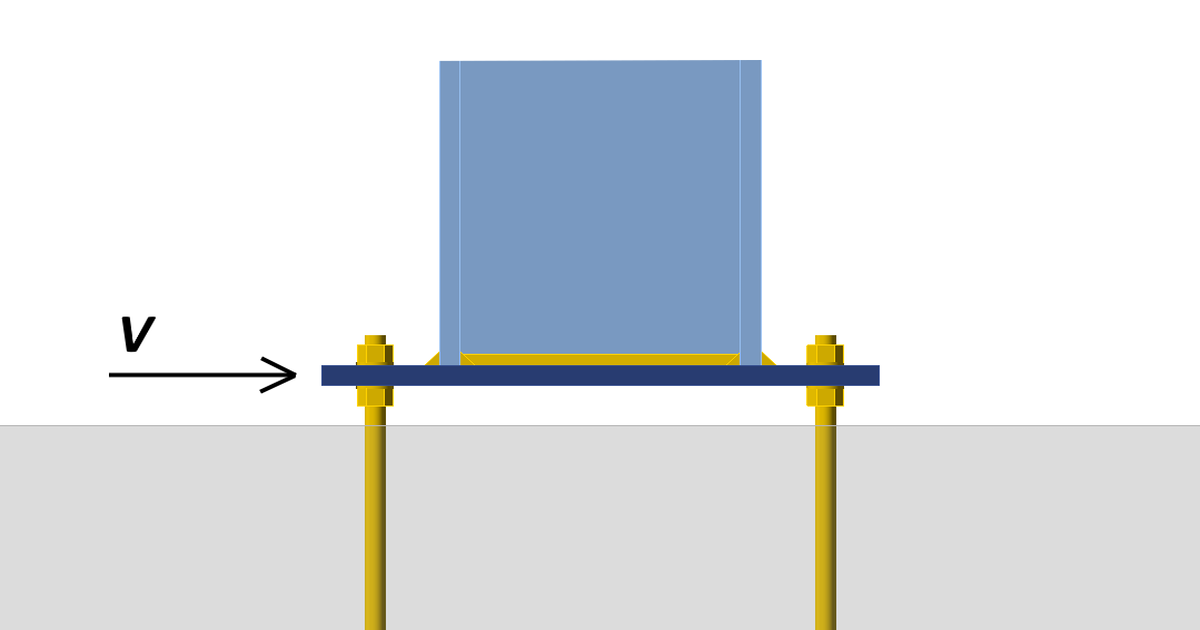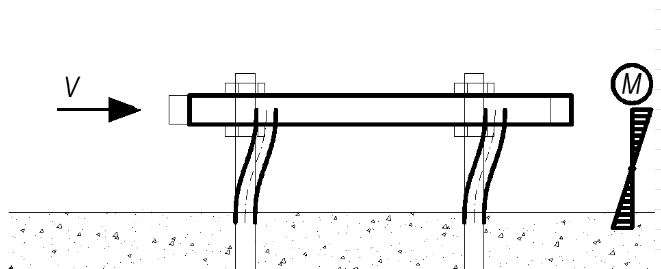Calculation of anchors with stand-off
An anchor with stand-off is designed as a bar element loaded by compressive or tensile force, shear force, and bending moment. The calculation of the bending moment has been improved to respect better the real behavior of stand-off anchors.
The value of the bending moment depends on the ratio between base plate stiffness and anchor stiffness. For a very weak plate and stiff anchors, the bending moment in the anchor will be as follows:
For stiff plate and weak anchors, the bending moment will look like this:
In previous versions, the bending moment in stand-off anchoring was always calculated as in the first case, assuming a weak plate and stiff anchors. The lever arm for moment calculation was the distance between the mid-plane of the plate and the concrete plus one-half of the anchor diameter. This was quite an over-conservative approach.
Since release 22.1.5, the calculation of the bending moment has been updated. The value is determined directly by the finite element model. The anchor is modelled as a beam element and moments in it respect the actual stiffness of the system. The anchor is fixed on both sides, one side is 0.5×d below the concrete level, and the other side is in the mid-plane of the plate. The extreme of the calculated moment is taken into account in the code check then.
More information regarding the code checking of anchors can be found in the theoretical background. Individual codes can be found here: EC, AISC, AS, STO.
Available in both Expert and Enhanced editions of IDEA StatiCa Steel.




